Water Heater Anode Rods Manufacturer and Supplier in China
The water heater anode is a key component to ensure the normal operation of the water heater. There are mainly magnesium rods, aluminum rods, zinc rods and electronic anodes to prevent corrosion of the inner tank.
- Zinc Anode
- Electron Anode
- Aluminum Anode
- Magnesium Anode
- Global Delivery
- ISO 9001:2015
- ISO 13485:2016
- 24/7 Technical Support

Trustworthy Water Heater Anode Factory-Wstitanium
Wstitanium has deep technical accumulation and rich experience in the field of water heater anode manufacturing. The R&D team composed of professional engineers and technicians constantly explores innovation, keeps up with industry development trends, and adopts advanced materials and manufacturing technologies to ensure that the quality and performance of water heater anodes are at the leading level. Wstitanium is your trusted water heater anode manufacturer and supplier.
Working Principle of Water Heater Anode
The anode of the water heater mainly works based on the principle of sacrificial anode protection. In the process of metal electrochemical corrosion, different metals have different electrode potentials. When two metals with different potentials come into contact in an electrolyte solution (water in the water heater), a galvanic cell is formed. The metal with a lower potential becomes the anode, undergoes an oxidation reaction, and is gradually corroded and dissolved; while the metal with a higher potential acts as the cathode, is protected, and the corrosion rate is greatly slowed down.
In a water heater, the inner tank is usually made of metal (such as stainless steel, enameled steel, etc.), and the anode is made of metal materials with lower potential than the inner tank metal, such as magnesium, aluminum, etc. In this way, when the water heater is working, the anode and the inner tank are in contact with water at the same time, and the anode is corroded first, thereby protecting the inner tank from corrosion. For example, the electrode potential of magnesium is lower than that of most inner tank metals. When a magnesium rod is installed in the inner tank of a water heater as an anode, in the electrolyte environment of water, the magnesium rod will continuously lose electrons and gradually corrode itself, while the inner tank metal avoids the fate of being corroded because it gains electrons.
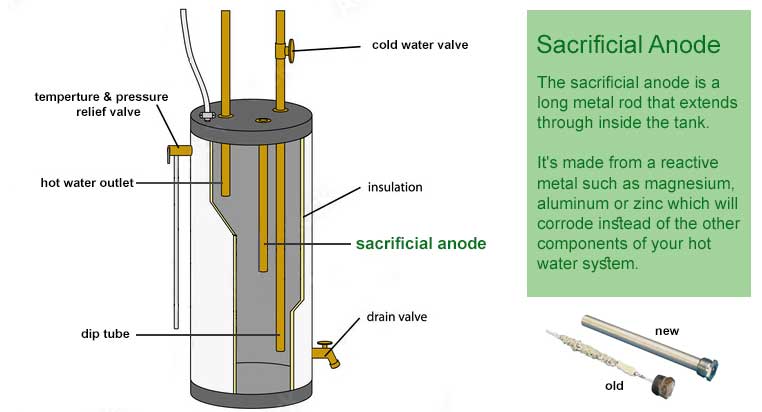
Advantages of water heater anode
The anode in the water heater usually exists in the form of an anode rod. The inner tank is the key part of the water heater to store hot water. It is in contact with water for a long time. The impurities, dissolved oxygen and various mineral ions in the water will “attack” the metal inner tank during the heating process, causing electrochemical corrosion. Once the inner tank is corroded, it will not only cause the water heater to leak, but also may cause safety hazards such as leakage. Throughout the life cycle of the water heater, the anode rod silently guards the inner tank and escorts our hot water life.
- Protect the inner tank
The inner tank is the core component of the water heater. Once the inner tank is corroded and leaks, the water heater is basically scrapped. The anode effectively protects the inner tank by sacrificing itself and bearing the corrosion in the water.
- Improve the quality of hot water
The dissolved substances in the anode can inhibit the growth of bacteria in the water. When the anode reacts chemically in the water, it makes it difficult for bacteria to survive and reproduce, thereby improving the quality of hot water.
- Ensure safety
If the inner tank is corroded, the heating tube may be exposed, causing safety accidents such as leakage. The presence of the anode protects the inner tank, reduces the risk of corrosion and perforation of the inner tank, and ensures safety.
Water Heater Anode Type
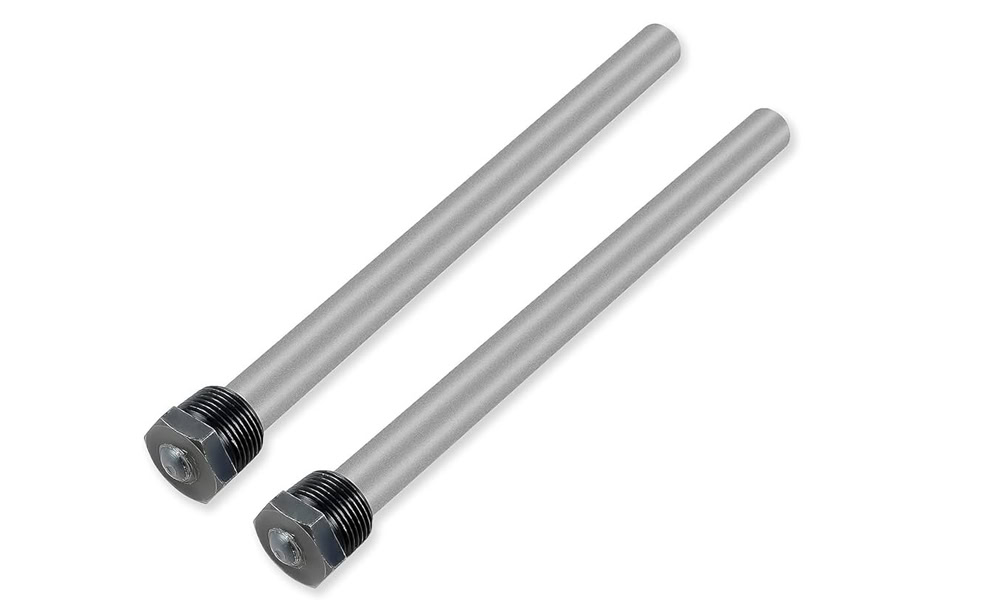
Magnesium is highly active and will react electrochemically with the electrolyte in the water before the metal in the water heater, thus protecting the inner tank from corrosion.
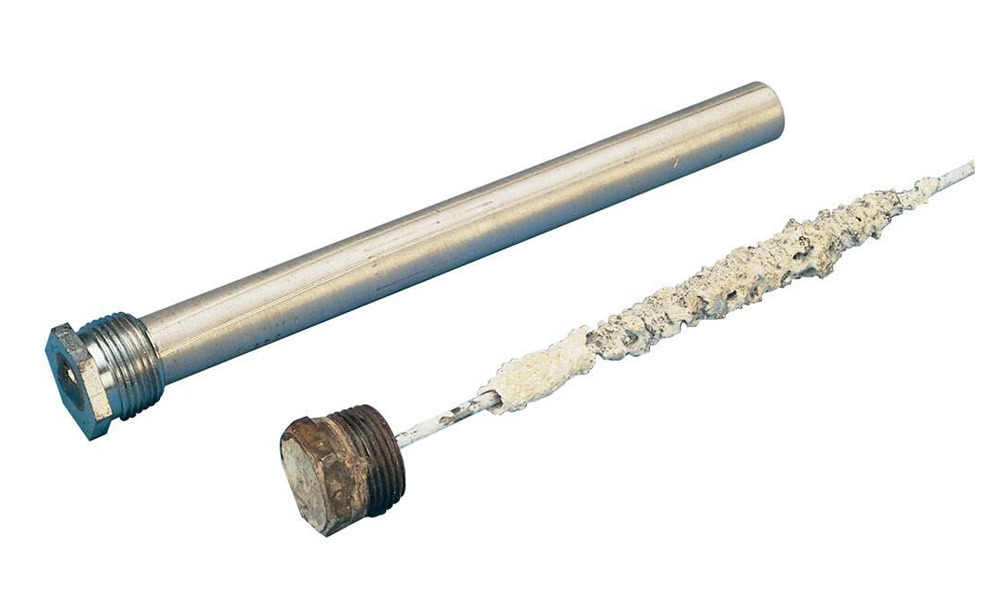
The aluminum oxide film prevents aluminum from further oxidation. At the same time, aluminum will also react with some substances in the water, sacrificing itself to protect the inner tank.
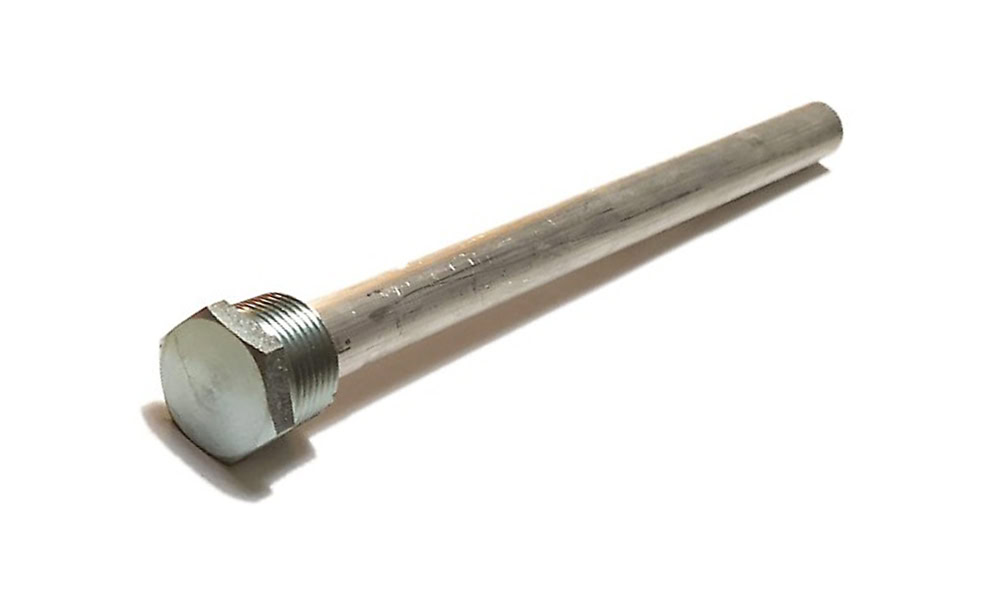
Zinc has a relatively active chemical property. In the electrolyte solution of the water heater inner tank, it loses electrons and is corroded first as an anode, thus protecting the inner tank metal from corrosion.
Magnesium Anode vs. Aluminum Anode vs. Zinc Anode
| Comparison Items | Magnesium Anode Rod | Aluminum Anode Rod | Zinc Anode Rod |
| Material Characteristics | Magnesium alloy (with a high – purity of over 95%) | Aluminum alloy (commonly seen in the North American market) | Zinc alloy (often contains elements such as magnesium and aluminum) |
| Working Principle | Sacrificial anode protection method: Magnesium is more reactive than iron, preferentially reacting with corrosive substances in water to protect the inner tank and heating elements. | Similar to the magnesium rod, but aluminum has a lower electrochemical activity and relies on alloy components to enhance the protection effect. | Sacrificial anode protection method: Zinc has a lower potential than iron, and it slows down the corrosion of the inner tank by consuming itself. |
| Advantages | 1. Softens water and reduces scale formation. | 1. Low density and light weight. | 1. Better corrosion – resistance than magnesium and aluminum. |
| 2. Low cost. | 2. Good workability, can be customized in various specifications. | 2. Produces less slag. | |
| 3. Wide range of applications. | 3. Longer service life. | ||
| Disadvantages | 1. High consumption rate, needs to be replaced regularly (every 1 – 2 years). | 1. Weaker corrosion – protection effect. | 1. Higher cost. |
| 2. Produces magnesium slag, which may affect water quality and heating efficiency. | 2. Long – term use may lead to the precipitation of aluminum ions, affecting water quality. | 2. Higher requirements for water quality (better effect in high – resistivity environments). | |
| Applicable Scenarios | Areas with hard water, ordinary household users. | Areas with soft water, or scenarios where weight is a concern. | Areas with poor water quality (such as high – salt and high – chlorine environments), users who pursue long – term protection. |
| Replacement Cycle | Usually 1 – 2 years, the worse the water quality, the more frequent the replacement. | Not clear, but presumably longer than the magnesium rod (subject to specific product instructions). | Longer (about 3 – 5 years), depending on water quality and usage frequency. |
| Other Notes | Some high – end products use high – purity magnesium rods with anti – scale coatings to extend service life. | Low market penetration rate, pay attention to product compatibility. | Some products contain magnesium and aluminum components to optimize performance, choose regular brands. |
Custom Manufacturing Water Heater Anode
Wstitanium has been deeply involved in the field of water heater anode manufacturing for many years and has accumulated rich technology and experience. It has brought together a group of professional material scientists, engineers and technicians, who have formed a strong R&D team, always standing at the forefront of the industry, constantly exploring new materials and innovative manufacturing technology.
Design
Wstitanium develops a detailed anode design plan based on your needs and the information provided. During the design process, the material, size, shape, structure and other factors of the anode are fully considered to ensure that the anode can perfectly match the water heater and play the best protection effect.
Simulation analysis and optimization: In order to verify the feasibility and effectiveness of the design plan, Wstitanium simulates and analyzes the working conditions of the anode in the water heater. Through simulation, the corrosion rate, protection effect and other parameters of the anode under different working conditions can be predicted, so as to optimize and adjust the design plan.
Provide multiple options: According to different needs and budgets, Wstitanium will provide a variety of anode design solutions. For customers who pay attention to cost, we can provide cost-effective magnesium alloy anode or aluminum alloy anode solutions; for customers who pursue high quality and long life, we can recommend titanium alloy anode or electronic anode solutions.
Manufacturing
Wstitanium has advanced equipment and a complete quality control system. Strict quality inspections are carried out at every stage from the purchase of raw materials to production and processing to ensure that the quality of water heater anodes meets the requirements. Wstitanium can manufacture anodes of various shapes, sizes and specifications according to the design plan. Whether it is anodes of standard sizes or anodes of special specifications, they can meet your requirements. For some special shapes of anodes, such as special-shaped anodes or anodes with special mounting structures, the Wstitanium team will use CNC machining (turning, milling, grinding, drilling, tapping, etc.) and molds to ensure the accuracy and quality of water heater anodes.
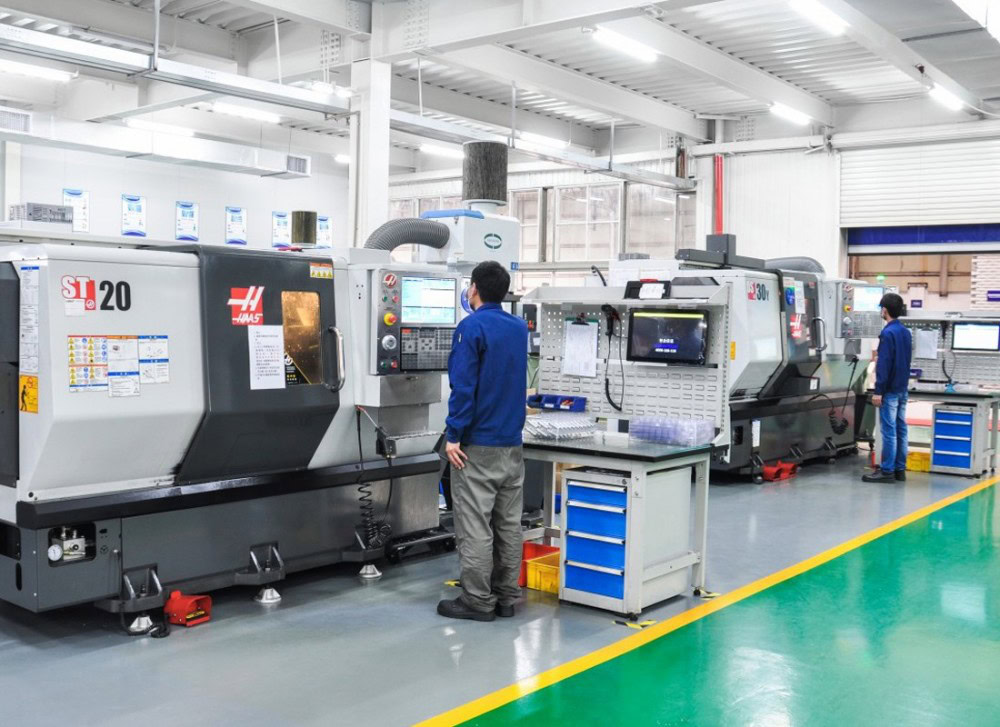
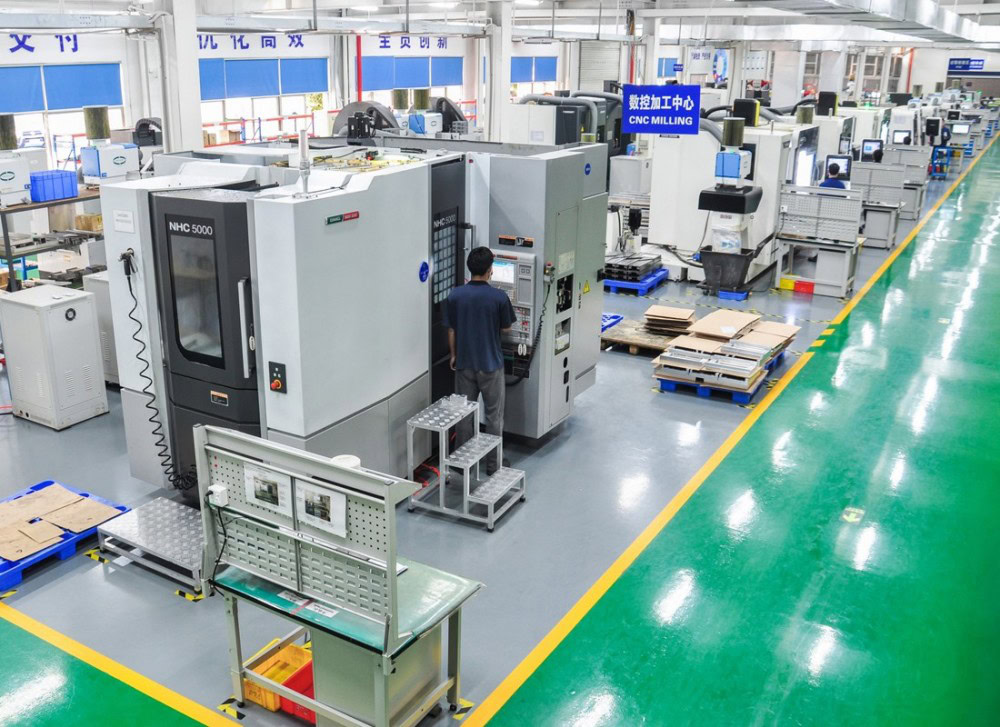
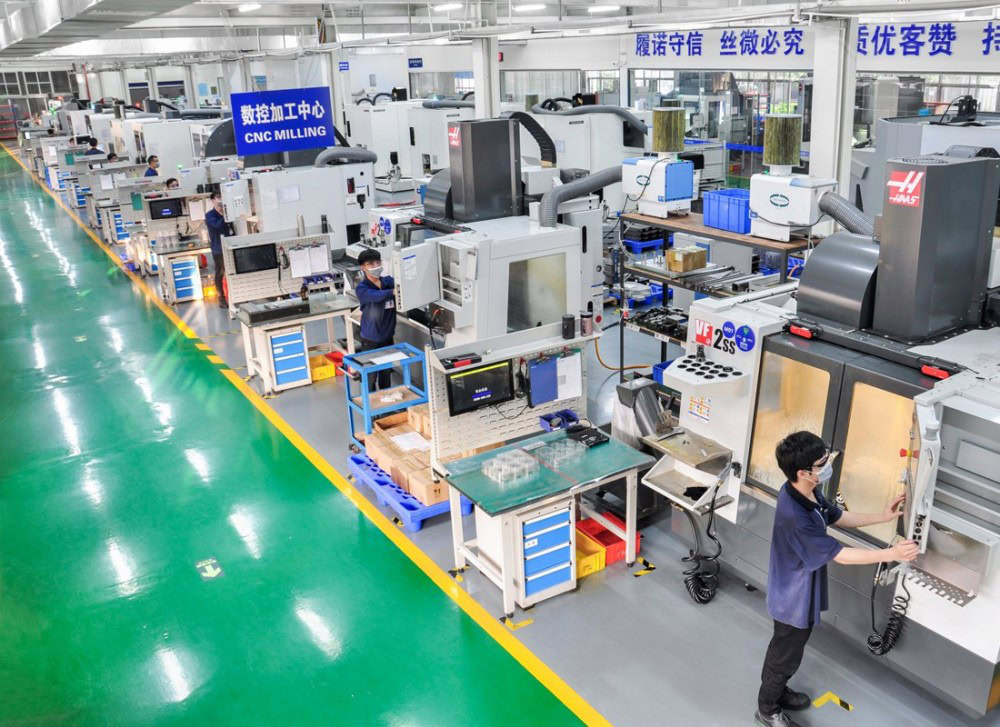
Although the anode of a water heater is a small component, it has a vital impact on the normal operation, service life, hot water quality and user safety of the water heater. By understanding the working principle and material characteristics of the anode of a water heater, we can better maintain the water heater and ensure that it serves us efficiently and safely.